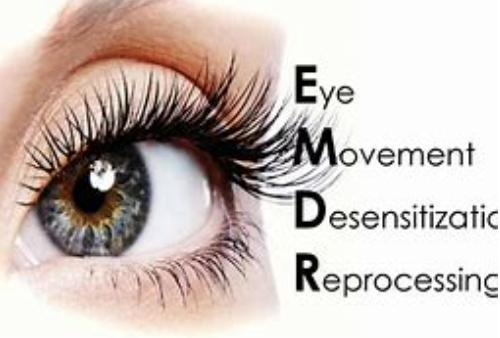EMDR stands for Eye Movement Desensitization Reprocessing.
We all, as creatures, have a natural mechanism that takes place every night when we sleep to process and integrate stressful information. It is called REM, or Rapid Eye Movement. This part of our sleep cycle involves rapid, bilateral eye movements. During EMDR active processing, these back and forth movements, otherwise known as bilateral stimulation, are replicated to facilitate “re-processing” of traumatic memories.
Why is replicating the bilateral movements that occur during REM sleep crucial to heal trauma? Consider the quote below:
Life threatening events OR experiences affecting our physical wellbeing or identity, or things that shatter our beliefs about ourselves, others and the world, can exceed the capacity of the nervous system to process them…These memories AND RELATED FEELINGS that we AVOID or try to SUPPRESS do not disappear. They cannot be passed on to the memory archive either. They remain there, in a particular state, conserving part of the initial thoughts, emotions or feelings.”
– A. Gonzalez
Going through EMDR therapy is like training and then “running” an emotional marathon. It takes consistent effort on the part of the individual to practice coping skills consistently build “distress tolerance,” or “emotional strength” to move the “wheelbarrow of the mind stuck in deep mud tracks,” so to speak, “to bring its wheels out of these ruts, out onto grass.” EMDR therapy therefore helps move an individual from continuing to experience the same responses in their present life due to old unresolved traumas.

Timeframes of each phase of EMDR are unique to every client. Popular media depicts EMDR therapy solely as phase 3, during which bilateral stimulation is facilitated. However, phase 2 is most critical in ensuring that effects of active processing globalize or “take and stay around,” and that a client has adequate affective distress tolerance for processing itself.
Melanie believes in using each client’s unique strengths during phase 2. She introduces the concept of Most Resourced Self to Help clients connect with their strengths as part of their daily life. Melanie considers it best clinical practice to ensure that a client has at least one coping skill that they consider part of their daily routine prior to active EMDR processing. She also considers it best clinical practice to observe that a client can self-initiate a positive affective shift prior to further consideration of active EMDR processing. She considers this especially important if a client has experienced complex developmental trauma.


EMDR therapy can also be learned about by visiting: EMDRIA.org, and viewing, “About EMDR therapy.”
Some helpful books to read about trauma:
*Most Resourced Self and implications for complex developmental trauma can be learned about by visiting:
https://www.airnetworkinstitute.com/air-network-model-gials
© 2024 Dayton Behavioral Care. All Rights Reserved.
